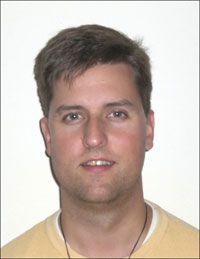Associate Professor, Geological Sciences
Coastal & Estuarine Sediment Transport, Marine Robotics
University of Delaware
College of College of Earth, Ocean, and Environment
Department of Geological Sciences
109 Penny Hall
University of Delaware
Newark, DE 19716
Email: art@udel.edu
Phone: 302-831-2498 (Office)
Fax: 302-831-4158 (Fax)
Website: http://www.geosci.udel.edu/cshel/
Ph.D., College of William and Mary, School of Marine Science, 2004
Fulbright Fellow, Sydney University, Australia, 1998/99
B.S., Duke University, 1998

Dr. Arthur Trembanis is the founding director of the Coastal Sediments, Hydrodynamics, and Engineering Laboratory (CSHEL) in the Department of Geological Sciences within the College of College of Earth, Ocean, and Environment (CMES) at the University of Delaware. After completing a Fulbright fellowship at Sydney University, he received his Ph.D. from William and Mary/VIMS. His research deals with the measuring and modeling of coastal morphodynamics particularly beach erosion, beach nourishment, bedform behavior and scour processes associated with seafloor objects. Dr. Trembanis has been active in the field of mine burial modeling and specializes in measuring and modeling the microtopography of the seafloor and the exchange of mass and momentum within the bottom-boundary layer.
Dr. Trembanis is involved in collaborative efforts to characterize water quality within inland bay systems. These projects seek to address the extent and dynamics of hypoxia with special reference to the behavior and abundance of important fishery species.
Dr. Trembanis and his research team develop and maintain Delaware’s first and only Autonomous Underwater Vehicle, DOERRI. DOERRI is a small un-manned untethered submersible designed and outfitted for work within lakes, rivers, estuaries, and shelf settings. DOERRI has a modular design that is suitable to an ever growing and changing suite of instrumentation for activities ranging from seafloor mapping and homeland defense to water quality monitoring. He has extensive experience in conducting and analyzing complex field studies from sites around the world, including New Zealand, Australia, Panama, and throughout the Eastern and Gulf Coasts of the US.